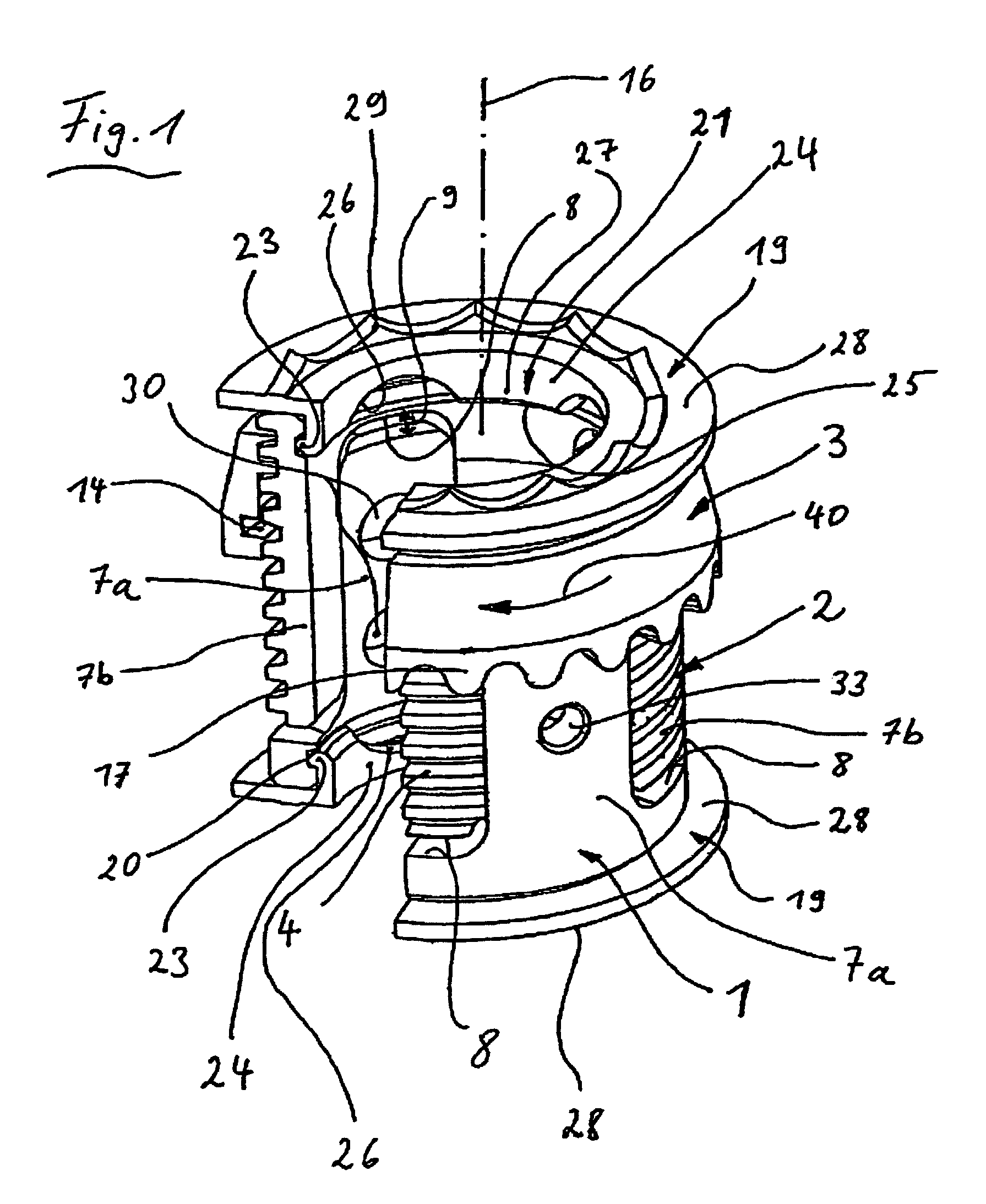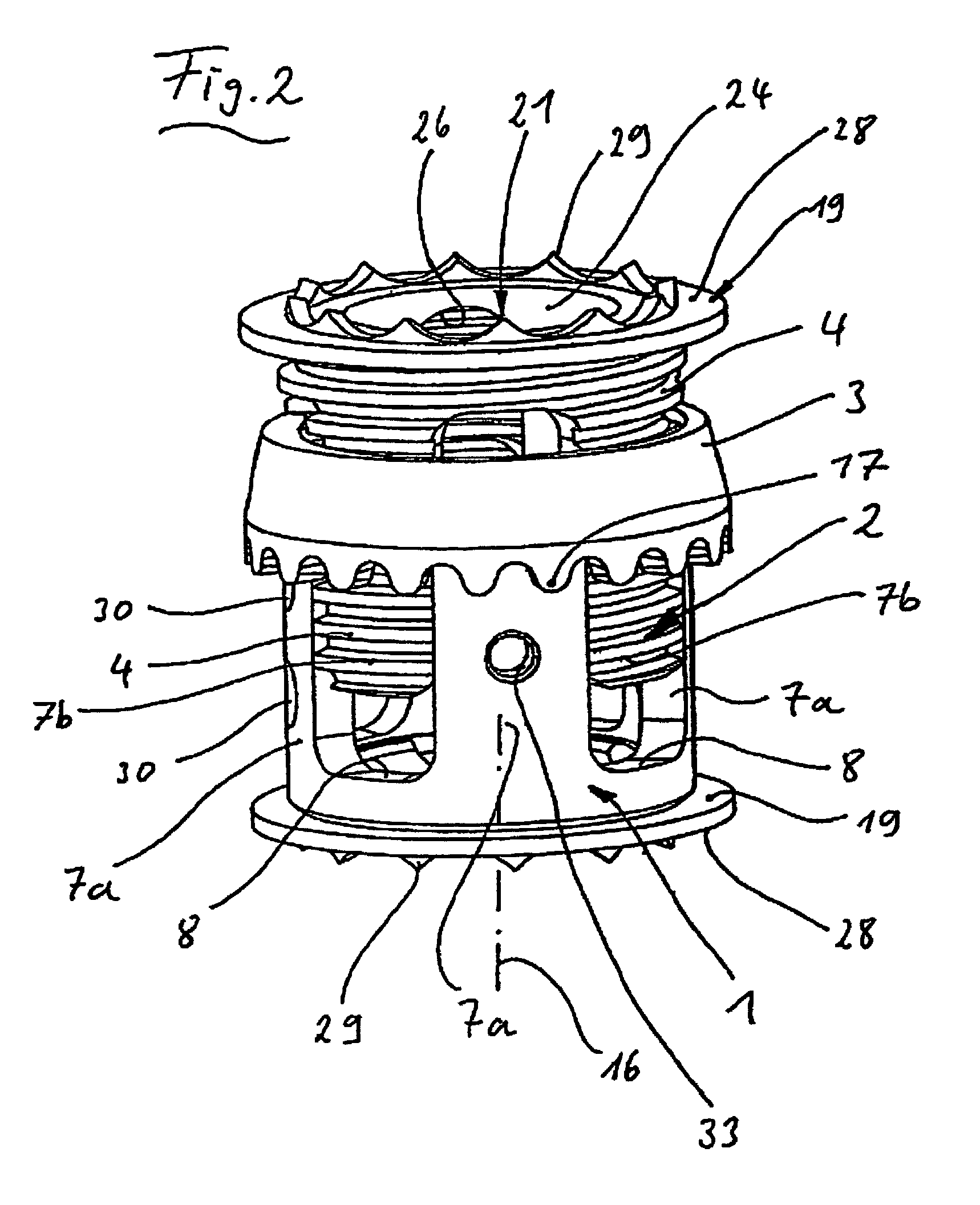Height-adjustable implant to be inserted between vertebral bodies and corresponding handling tool
a technology of adjusting device and insertion device, which is applied in bone implants, prostheses, medical science, etc., can solve the problem that the nut is not otherwise secured on the first sleeve part, and achieve the effect of less material, less weight, and preventing mutual rotation
- Summary
- Abstract
- Description
- Claims
- Application Information
AI Technical Summary
Benefits of technology
Problems solved by technology
Method used
Image
Examples
Embodiment Construction
[0020]The implant illustrated in the drawings comprises a first sleeve part 1, a second sleeve part 2 and a nut 3 as its main components. The sleeve part 2 is provided with an external thread 4 extending essentially across its entire length. Both sleeve parts 1, 2 have axially extending windows 6 which open into their mutually facing end face 5a, b in the assembled state. The peripheral portions 7a, b left between two adjacent windows lie so as to be axially displaceable in the windows 6 of the other respective sleeve part 1, 2. This being the case, the clearance between the peripheral portions 7a, b is dimensioned so as to guarantee that the two sleeve parts will sit without wobbling but easily slide one inside the other. The sleeve parts 1, 2 have a more or less identical wall thickness and the same internal diameter, i.e. the peripheral portions 7b of the second sleeve part 2 do not project beyond the external circumference or beyond the internal circumference of the sleeve part ...
PUM
 Login to View More
Login to View More Abstract
Description
Claims
Application Information
 Login to View More
Login to View More - R&D
- Intellectual Property
- Life Sciences
- Materials
- Tech Scout
- Unparalleled Data Quality
- Higher Quality Content
- 60% Fewer Hallucinations
Browse by: Latest US Patents, China's latest patents, Technical Efficacy Thesaurus, Application Domain, Technology Topic, Popular Technical Reports.
© 2025 PatSnap. All rights reserved.Legal|Privacy policy|Modern Slavery Act Transparency Statement|Sitemap|About US| Contact US: help@patsnap.com



